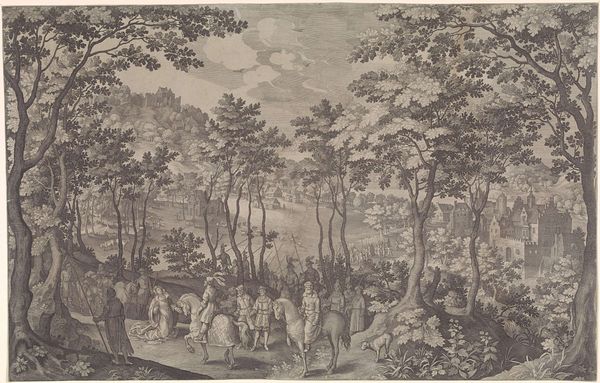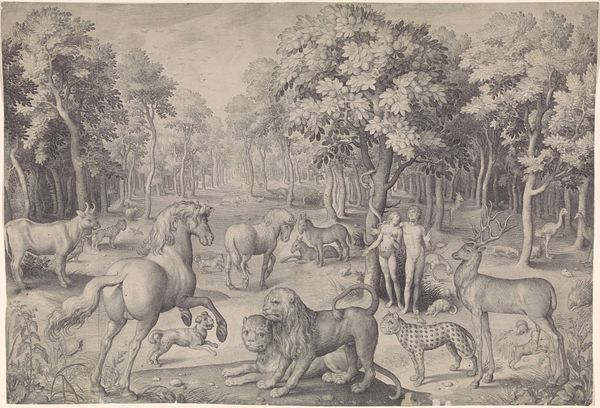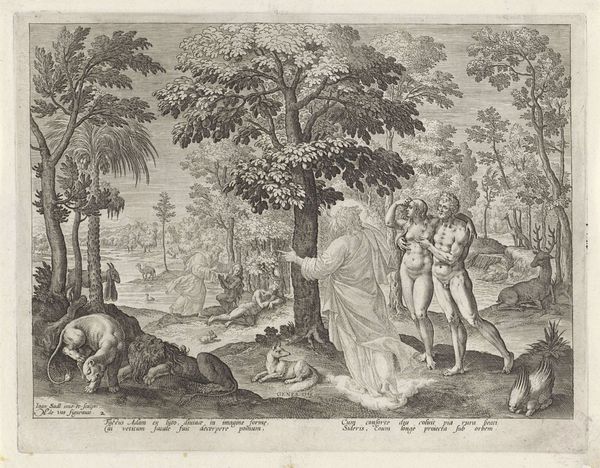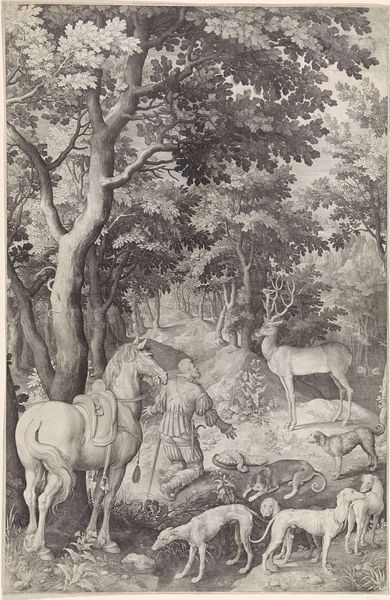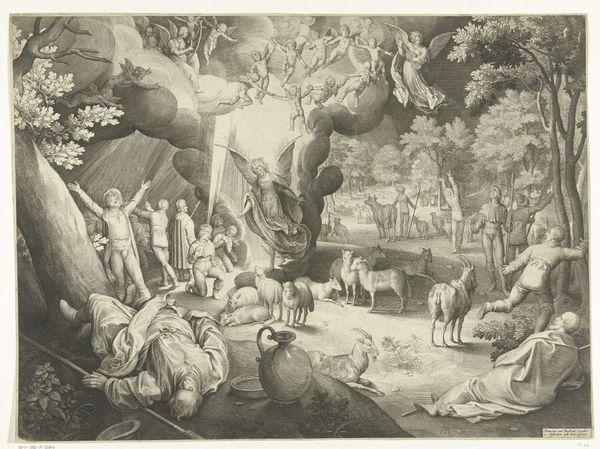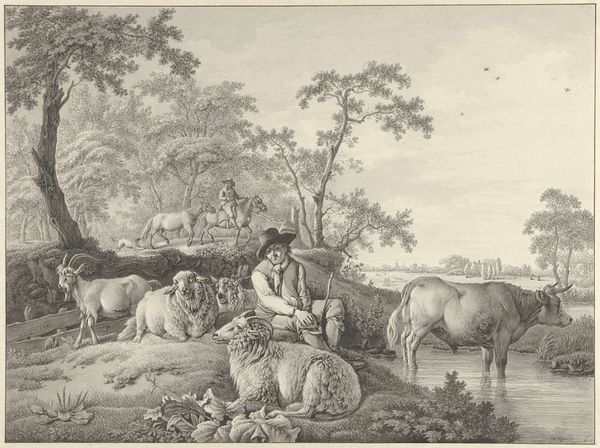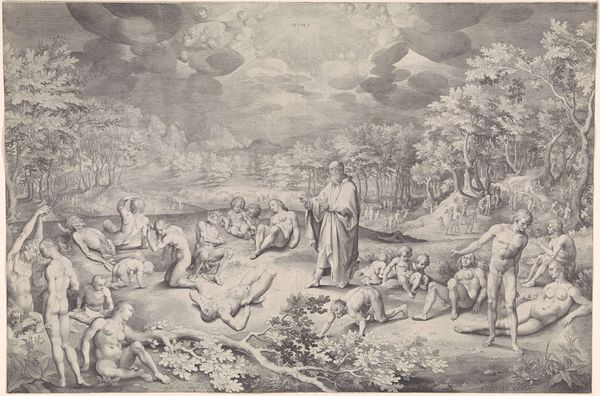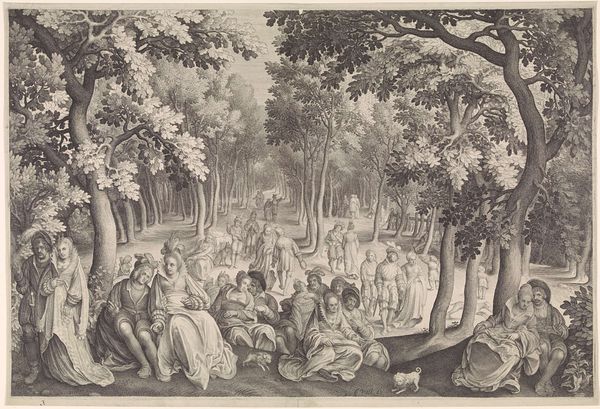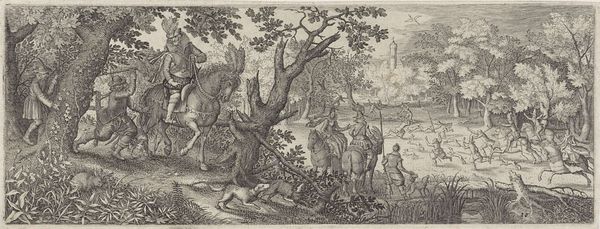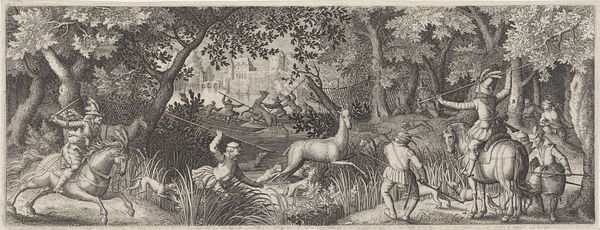
print, engraving
#
narrative-art
#
baroque
# print
#
landscape
#
perspective
#
figuration
#
geometric
#
history-painting
#
academic-art
#
engraving
Dimensions: width 695 mm, height 449 mm
Copyright: Rijks Museum: Open Domain
Curator: Here we have Nicolaes de Bruyn’s "David en Goliat" from 1609, held at the Rijksmuseum. It’s an engraving, depicting, as the title suggests, the iconic biblical scene. Editor: My goodness, it’s a wonderfully theatrical landscape! The details, especially David standing triumphant with Goliath’s head…it’s quite unsettling. But what strikes me is the strange perspective— everything seems to bleed together, from foreground soldiers to a distant mountainscape. It gives the piece a fantastical, dreamlike quality despite the gruesome subject matter. Curator: Indeed, the blurring of the foreground and background serves specific ideological functions. Consider the economic shifts during the Baroque era—a rising merchant class hungry for narratives of success. De Bruyn's technique here reflects that desire for upward mobility and expansion, creating a world without boundaries, all achievable through faith, of course. Note how the geometric placement of trees leads your eye deliberately back and forth. It speaks volumes about the emerging global trade routes during this time and the power afforded by religious virtue. Editor: You're pulling me in a million directions! I find myself resisting your hyper-intellectual, yet intriguing, analysis, and return to my senses as I look back to that head...Ugh, is it art imitating reality when it appears to resemble that creepy guy from highschool I don’t care to recall?! But the material process itself is interesting—etching such detailed drama onto a plate. Did De Bruyn make other prints, I wonder, perhaps of mythological dramas with similar techniques to explore shifting political ideologies. Curator: Yes, the printmaking tradition in the Netherlands was indeed steeped in similar biblical, mythological, and genre scenes that served both commercial and social purposes. De Bruyn explored similar narratives often tied to emergent political ideologies of Dutch nation building. Looking at "David en Goliat," it is crucial to consider its place in a network of such images and objects in society. The labor required to produce and disseminate these was integral to a broader early modern capitalist economy. Editor: The economics…you've stripped away its drama for a cold observation of history and manufacturing. For me it becomes more real once the production is acknowledged, oddly. I find it thought-provoking nonetheless. Curator: It has been for me, too, recontextualizing familiar works by reflecting on their embedded industrial processes and the societies and powers therein. Editor: It's quite an experience to encounter a work like this. Now, I'm left with a more curious outlook, not simply because of the graphic storytelling, but for all the stories that exist as one looks from process to ideology.
Comments
No comments
Be the first to comment and join the conversation on the ultimate creative platform.

